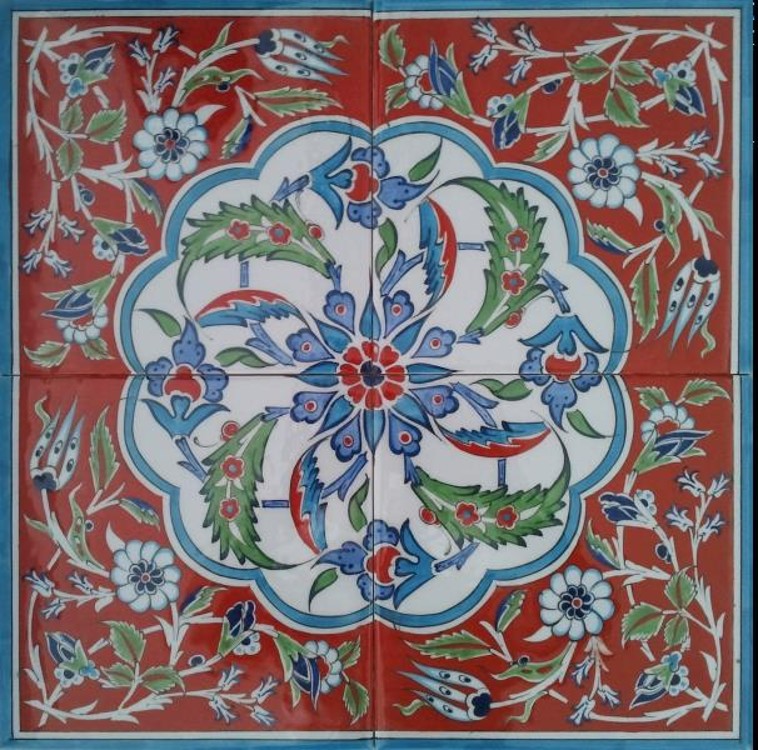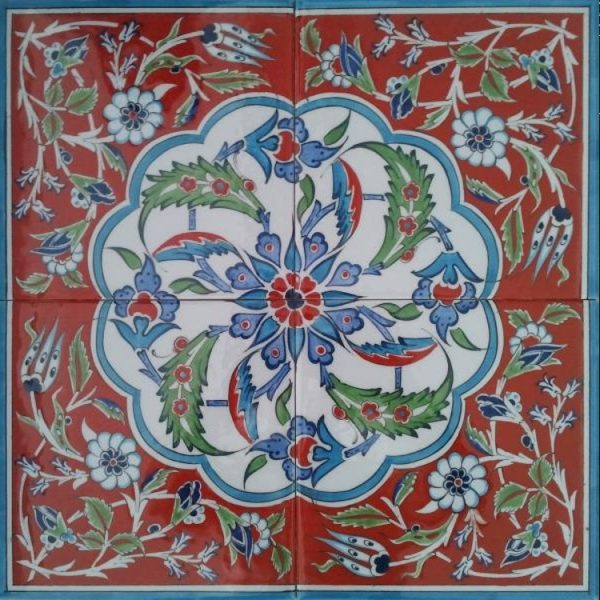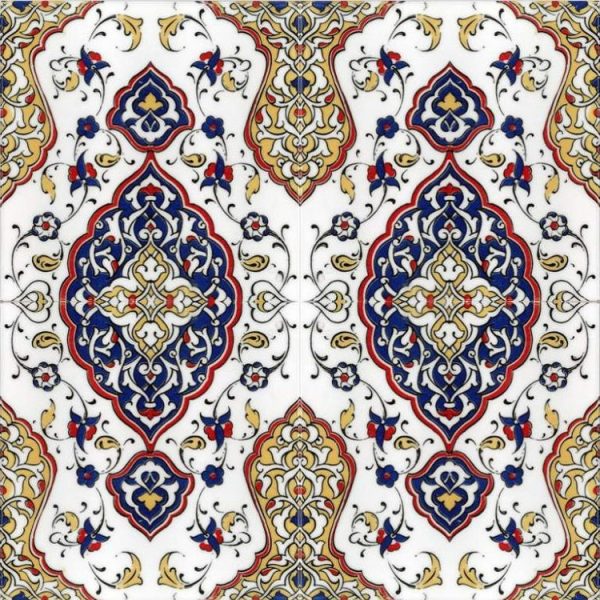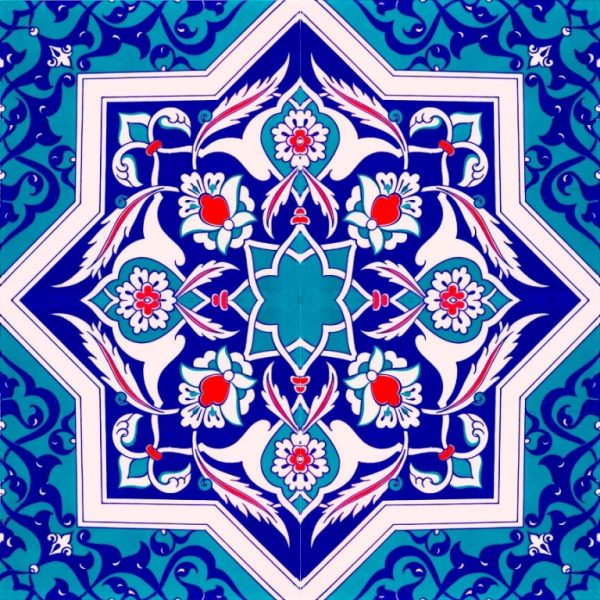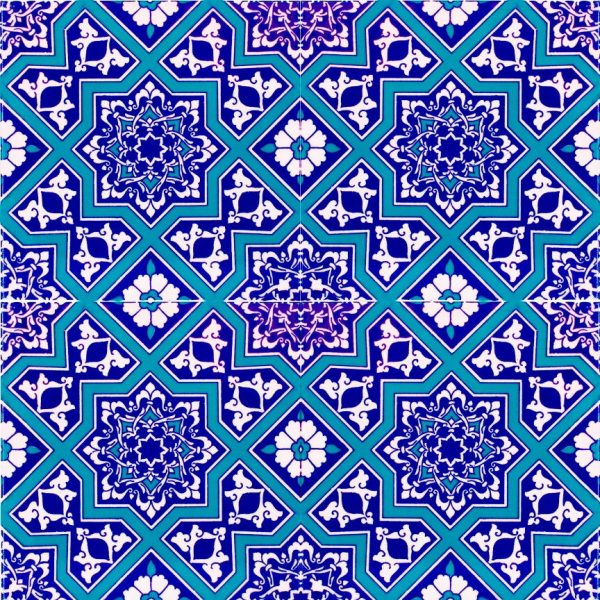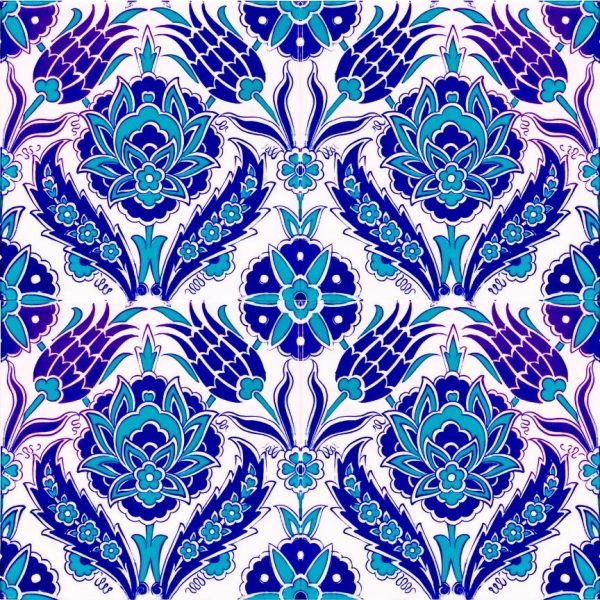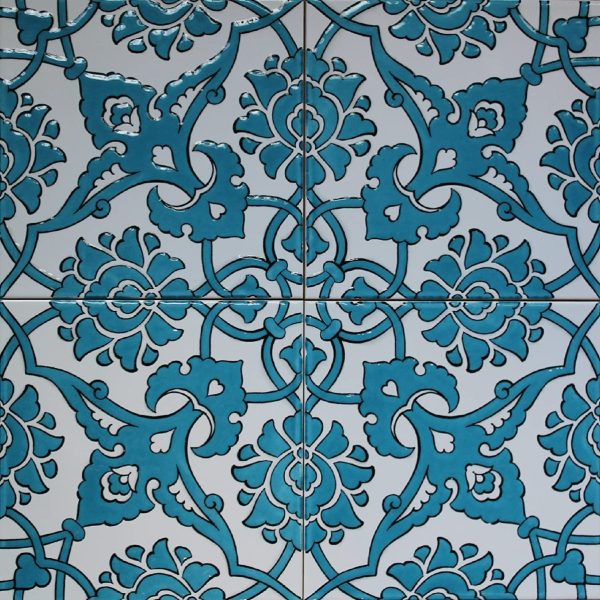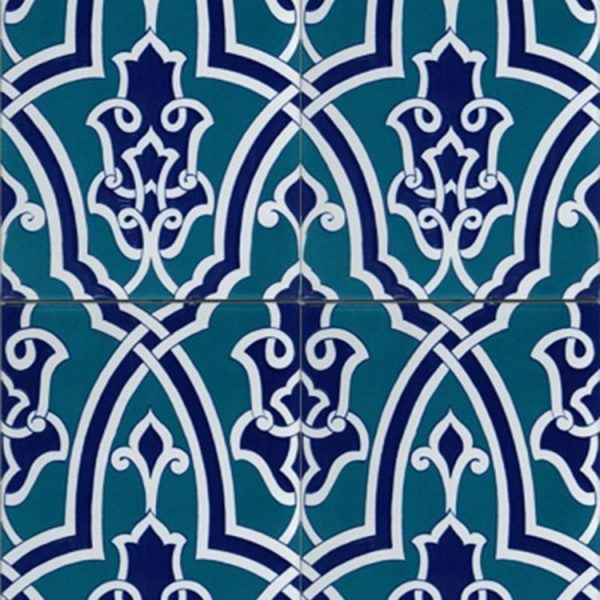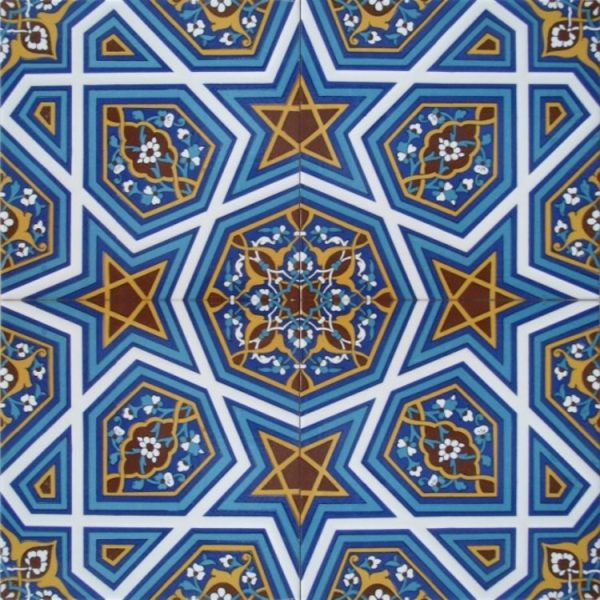Mosque tiles; are called ceramic pieces made of a kind of clay soil and fired in an oven, glazed on one surface, decorated with various colors and motifs, and used for the interior and exterior of the mosque. It is possible to see the tiles, which add a beautiful look inside the mosque, to the outside of the mosque.
You can choose mosque tiles to increase the population of mosques and the value they add to people, to provide an aesthetic appearance inside or outside the mosque, and to make the area more useful.
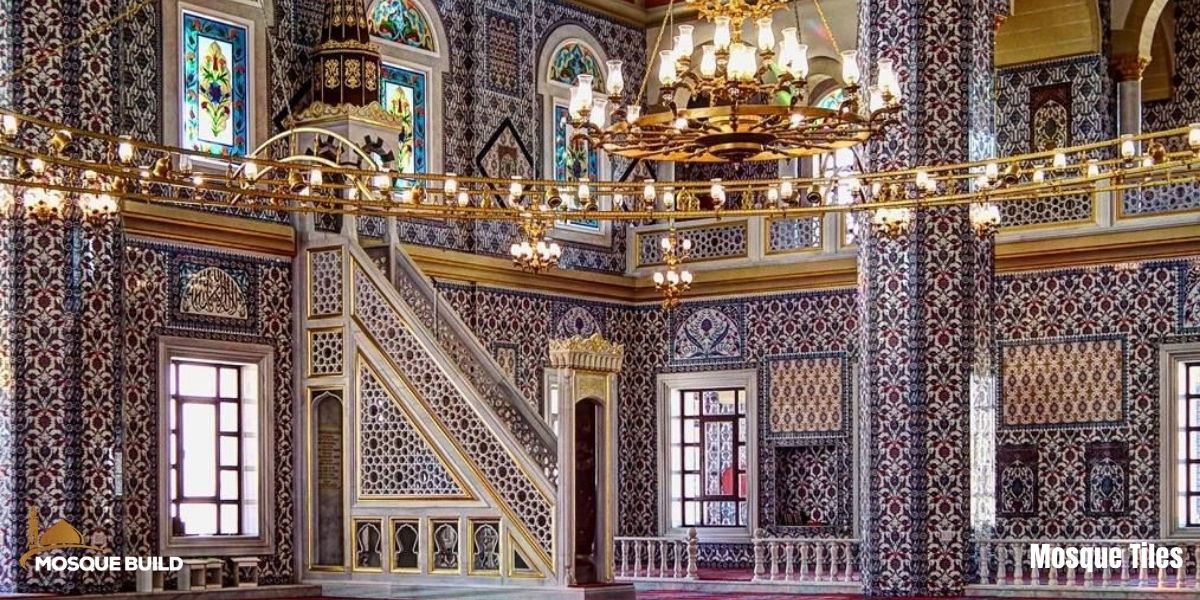
Mosque Tiles
Mosque tiles; is a protective transparent layer created by the melting glaze on the plate made of tile paste became the basis of the art of tiles and provided a non-fading color to the architectural ornament in which it was used. In addition to mosques, masjid tiles have also added beauty to places of worship and undertaken the task of covering interior and exterior facades.
Mosque and Masjid Floor Tiles
Mosque and Masjid Floor Tiles decorate places of worship with many different designs, shapes, and color options. Mosque floor tiles should be more robust than other types of tiles. Since people will both act and worship on them, they should be made of a certain thickness and wear-resistant raw material.
Mosque floor tiles and Masjid Floor Tiles are also very advantageous in terms of cleaning. They are preferred because they are very easy to clean and do not absorb dirt easily. There are also mosques where some Mosque floor tiles and Masjid Floor Tiles are placed with a prayer rug pattern without using any carpets.
Wall Tiles For Mosque
There are several methods for visually beautifying the walls inside mosques. One of them is wall tiles for a mosque. The wall tiles for the mosque option, in which very eye-catching patterns are created, especially blue and green, provide a very bright atmosphere in the mosque.
The biggest plus of the wall tiles for the mosque option is that they hold little dirt and can be cleaned very quickly. Considering that cleaning the mosque is both very difficult and costly, Wall tiles for the mosque can be considered as an option.
Mosque Tile History
The tile was first made in Asia. The first tiles were made with earth unglazed and unpolished. It is thought that the liquid inside is covered with a material such as glass to prevent it from flowing and to be more hygienic. When the outside of the vessels was coated with materials such as glass and mineral oxide and fired, it was observed that the glazed vessels were durable and polished.
Sumerian and Assyrian monuments are covered with glazed bricks. The first state to do the glazing of the brick was the Sumerians. The Egyptians used these bricks to build their walls. In addition, these bricks are also found on the walls of the Dara Palace in Iran. This current, which spread to Iran, gave the best technical result in a brick.
It is known that the Abbasids used tiles. Over time, tiles have been used in mosques and masjids in almost all of the Islamic world.
The history of Islamic Turkish tile art dates back to the Karakhanids period. They decorated their places of worship with tile motifs and mosaic tiles. Then, the tile decoration situation in many of the buildings of that period began to increase over time.
The period when Mosque Tile reached its peak artistically is the Seljuk and Ottoman periods. The art of mosque tile in the Ottoman Empire gained tremendous experience. Even today, the mosque tiles of that period still stand as solid and bright as the first day.
What Are the Difference Among Mosque Tiles, Mosque Mosaics, and Mosque Ceramics?
It is necessary to briefly touch upon the distinction between mosaic, ceramic, and tile for the mosque. Ceramic is a general name and the items produced mostly from ceramic clay (the name given to the special clay in the dough consistency used in production) are named with this term. According to grain sizes, ceramics are divided into two main types:
- Coarse ceramic,
- Fine ceramic. Ceramic clay generally consists of quartz, feldspar, and kaolin (clay).
Decorative products made of a more special ceramic paste, decorated with traditional colors and motifs, and glazed on one side are called tiles. Tiles are generally divided into two types:
- Tiles in the form of large plates,
- Tiles made of small pieces (mosaic).
Wall tiles (large plate tiles) are usually hexagonal, square, or other shapes and are mostly used on the interior and flat surfaces of buildings.
Tile and porcelain are obtained by firing clay soils and minerals. However, tiles are fired at much higher temperatures than ceramics. This is one of the most fundamental differences that separate these two branches of art from each other.
We can mention that ceramic products have a much softer structure. Compared to tile, it has much more glassy properties. In addition, tile is much more durable than ceramic.
When examined structurally, we can say that there is much more space inside the ceramic. Mosaic tile, on the other hand, is prepared by dividing the tile plate into small pieces before firing. With the tile mosaic technique, flat or curved surfaces can be covered inside and outside the buildings.
Apart from this, Mosque Mosaic can also be made outside of tiles. Mosque mosaic workmanship is especially important for mosque exterior cladding. Mosque mosaic can also be used in the interior of the mosque. In the decoration of the interior of the mosque, magnificent works of art are revealed from small pieces with mosque mosaics.
Masjid or Mosque Tiles Design
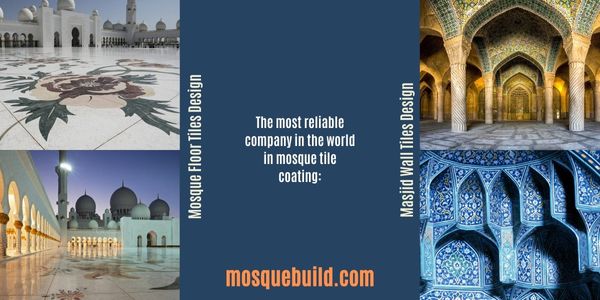
There is no certainty that the tile design of a mosque will be suitable for other mosques. The architecture in the mosque and the decoration such as lighting affect the mosque tile design they will choose. Therefore, help us to find the most suitable design according to the results of the analysis we will do with you in the selection of masjid tile design or mosque tile design.
We, as a company, consider that mosque tile design should be made once and used for decades. We need to consult more for the most appropriate choice.
Mosque Floor Tiles Design
Mosque Floor Tiles Design offers different options to people. Our company brings these possibilities to you. In Mosque Floor Tiles Design, we are primarily in favor of durability as a company. That’s why we use high-tech opportunities in our Mosque Floor Tiles production. After completing the manufacturing process, we design each tile with fine artistic twists and technological possibilities brought by the age.
We conduct long-term consultations with you to design the most suitable design for your mosque. By getting to know your glass in the best way, we give you special suggestions about mosque floor tiles design.
If the area you want to cover is outside the mosque, you can have your glass covered economically with the prayer rug design mosque floor tiles design that we will design directly from the carpet. Of course, what you need to pay attention to here is the climatic characteristics of the place where the mosque will be built. In cold climates, praying directly on the mosque tiles without a carpet can have negative consequences. In addition, although it gives a bright and stylish appearance, you cannot provide the comfort of a soft carpet with mosque floor tiles with prayer rug motifs.
Mosque floor tiles with prayer rug patterns can be considered in outdoor areas where Muslims worshiping in the mosque are walking intensively and in hot climates.
Masjid Wall Tiles Design
Our Masjid Wall Tiles Design options are as wide as your imagination. We can offer you many examples from historical tile designs that contain the unique heritage of the Seljuk and Ottoman periods to today’s modern tile designs.
Of course, as in floor tiles, the architectural design, and interior and exterior decoration of your mosque are among the factors that will affect the options we will offer you in masjid wall tiles.
As a company, we are in favor of simplicity in Masjid Wall Tiles Design. It is necessary to achieve harmony very well, both at a certain rate and at the point of covering the entire mosque with tiles. Otherwise, there may be color transitions that will tire people and even get bored after a certain period.
You can trust the MosqueBuild.com family in this regard and realize our unique solutions…
Things to Consider When Buying Mosque Or Masjid Tiles
There are different elements to consider when buying mosque or masjid tiles. These elements will affect the appearance of the space more elegant, elite, or traditional, as well as affect the functionality of the space.
However, it plays a large role in the impact and experience offered to people. All these factors affect the use and style of mosques. These important issues for the field are stated below.
- First of all, determine your purpose of use in the areas where you will lay mosque tiles. Considering the technical characteristics of the floor tiles, choose ceramics with suitable abrasion resistance according to the traffic density of the area to be covered.
- Take care to use wall tiles on the wall and floor tiles on the floor. Because with floor tiles, you may cause a load that is too heavy to carry on the wall. Keep in mind the necessity of using the right adhesive as well as choosing the right tile.
- The dimensions and form of the place where you will apply will also determine your color choice. Choosing the right size is as important as deciding on the style and color of the tiles.
- After taking the dimensions of the surfaces, it is necessary to decide whether the tiles will be square, rectangular, or in another form. In which direction do you want to make the space look long or wide, place the long side of the rectangular tiles in that direction.
- You can increase the sense of depth by covering a wall with a darker-colored tile in spaces where you can make it appear larger by using light tones.
- Since porcelain tiles absorb less water, they are preferred in places such as ablution.
- Do not use glazed and glossy porcelain tiles on the floors of wet places. Because you will face the problem of slipperiness.
- You should prefer tiles with matte and non-slippery surfaces, especially in places where small children run around and where safety is a leading criterion. These products are also easy to clean.
Mosque Tiles For Sale
Mosque tiles for sale can differ in the area. Although it seems to comply with modern trade rules, it is not logical to have such a high price difference between products offered as the same. So what is this price difference? Many factors such as raw material differences used in tiles, technological differences, and artistic perspectives are counted as the factors of tile prices.
So what if you don’t like the look that comes out when you cover your glass with tiles or if you can’t see the quality you want as a result of the coating? Are you going to completely disassemble it and re-coat it?
Please meet the MosqueBuild.com family in every way during your Mosque Tiles For Sale search so that you do not become a victim later on. Do not hesitate to ask us about Mosque Tiles For Sale.
We help you with artistic success, not just to sell products in mosque tiles, as we do at every stage of mosque construction.
Mosque Tile Patterns
There are many options for mosque tile patterns on our site. You can find dozens of products in different categories on our site.
Click for more pictures about the mosque tiles.
You can reach our company quickly via whatsapp for mosque construction and mosque tiles production.
Most Read Articles:















